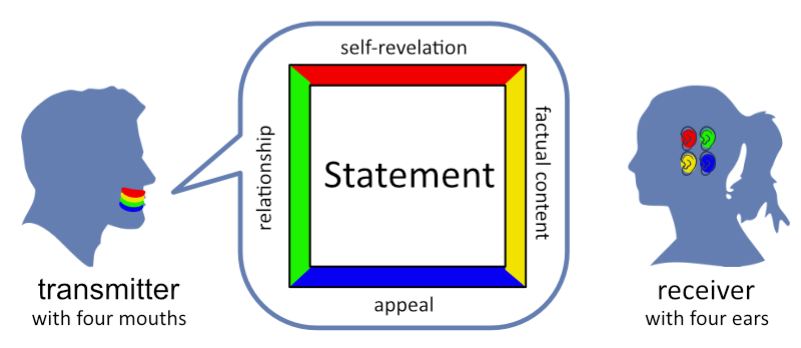Communication in home care - how it can succeed

In home care, we encounter different people every day with their own perspectives, challenges and goals. In addition, they have individual language habits such as dialects or technical language. As family caregivers, it is therefore important to deal more intensively with the topic of communication, because good cooperation depends largely on our communicative skills.
Whether we talk to doctors and dare to ask questions if we don't understand, or whether we communicate with the person in need of care who may feel patronised - our way and perspective on communication can make a big difference in whether everyone involved, including ourselves, feels understood and that their needs are taken into account.
Particular challenges arise for family carers when the person being cared for suffers from cognitive impairment, whether confusion from dementia or damage to the speech centre following a stroke. In such cases, the usual communication patterns are often no longer sufficient. Non-verbal communication then often comes further to the fore and sometimes it can also be the case that communication is only possible via tactile stimuli (touch), scent or music.
Role conflicts can also occur, where the roles of "parent and child" seem to feel reversed. In such situations, emotions, but also fears and anxieties, play a role that often remain unspoken. Here it can be extremely helpful to deal with the topic of communication in order to gain new impulses.
A useful tool for a reflective approach to our communication patterns is the communication square by Friedemann Schulz von Thun. According to this model, every utterance contains four messages, even if we only want to convey a single message. This is because communication always involves a receiver who interprets the utterance in four different ways. The communication square, also known as the "four ears model", gives us the opportunity to take a closer look at this phenomenon and reflect on our own communication.
The communication square
The communication square by Friedemann Schulz von Thun is a model that helps us to understand the different levels and messages in communication. It consists of four central elements that we express as a message every time we speak. Whether we want to or not. This is because the receiver (communication partner) also interprets the message on just these 4 levels.
1. factual content: this refers to the pure information we want to convey. It is about facts, data and factual statements.
E.g. "The traffic light is red!"
2. self-revelation: Here we express our own thoughts, opinions and feelings. We give insight into our personal perspective and show who we are.
e.g. "I don't feel safe with you in the car!"
3. relationship: the relationship level is about what we think about the other person or how we relate to them. It is about our perception and evaluation of the relationship.
e.g. "I care about you, so I don't want to hurt you by telling you that I doubt your driving skills!"
4. appeal/ request: the appeal is what we expect or hope for from the other person. It is the message that moves us to get a reaction or action from them.
e.g. "Watch out for traffic better!"

(Graphic: Communication square - the four sides of a message).
The communication square illustrates that every utterance contains several of these elements at the same time. The receiver then interprets the utterance on different levels and can perceive different messages.
To communicate effectively, it is important to be aware of what messages we are sending and how they can be interpreted by the other person. By looking at the communication square, we can reduce misunderstandings and promote clearer communication. Especially when conflicts arise, it can help to be aware of this model. Not only can the problem be seen from a new perspective, but new impulses for future conversations can also be gained.
The limits of the model
However, it is also important to note that communication is complex and does not always happen unambiguously. People have different perceptions and experiences that can influence their interpretation. Therefore, it is helpful to listen openly and respectfully, to ask follow-up questions and to strive for a common understanding. Especially when cognitive limitations are present, such as in the case of dementia, this communication model can only be helpful to a limited extent. In this case, further aspects have to be considered in order to meet the requirements.
However, the communication square also offers us valuable orientation in this case, so that we can communicate more consciously and effectively. By understanding the different levels and messages, we can strengthen our communication skills and contribute to a better connection with our fellow human beings.









